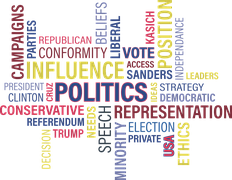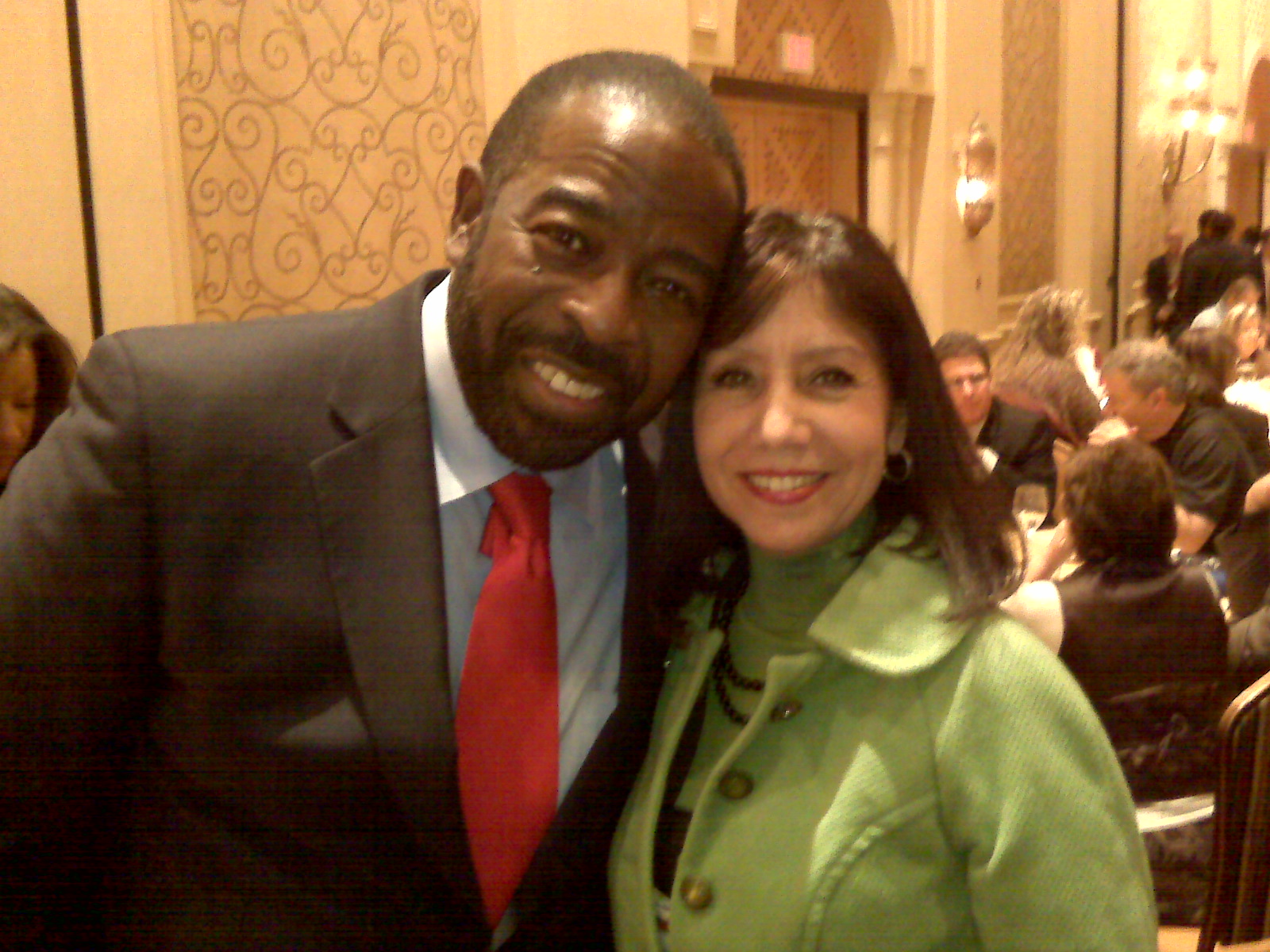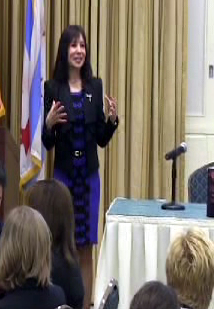 It was round two for Hillary Clinton and Donald Trump at the second presidential debate held at Washington University in St. Louis.
The atmosphere was tense as evidenced by the candidates' refusal to shake hands. But while the focus is supposed to be on the candidates, they were upstaged by Martha Raddatz, who co-moderated with Anderson Cooper. Where are the good moderators? It's been a challenge to respect the facilitators in these debates because they don't seem to understand the role of a moderator. Here are some guidelines for being an effective moderator:
It was round two for Hillary Clinton and Donald Trump at the second presidential debate held at Washington University in St. Louis.
The atmosphere was tense as evidenced by the candidates' refusal to shake hands. But while the focus is supposed to be on the candidates, they were upstaged by Martha Raddatz, who co-moderated with Anderson Cooper. Where are the good moderators? It's been a challenge to respect the facilitators in these debates because they don't seem to understand the role of a moderator. Here are some guidelines for being an effective moderator:
Ask prepared questions. The quality of the questions will impact the quality of the debate. Both Anderson and Martha asked relevant questions and invited guests to participate.
Share the spotlight. During the debate, Anderson ceded control to Martha who dominated the conversation. At times, Anderson seemed invisible. What is the point of having two moderators unless they are both contributing?
Keep control. The job of the moderator is to begin and end on time and to give equal time to both candidates. There were several times when they allowed the candidates to speak longer than the allotted two minutes. It's also the job of the moderator to keep the focus and redirect the candidate to answer the question.
Be impartial.The kinds of questions and the number of questions should not favor one candidate over another. This wasn't always the case. Trump alluded to "three on one." Skilled moderators do not show their hand. The audience should not be able to sense the preference of the moderator.
Facilitate don't participate. This is where Raddatz really blew it. A moderator asks questions but doesn't offer opinions. The purpose of the debate is to showcase the candidates- not the moderators. Facilitation skills seem to be difficult for many professionals to master. In order to be a good facilitator you need to suspend your ego and draw the conversation from the participants. A facilitator is the conductor, not the musician. Facilitation is different from interviewing and from reporting. Maybe it's time for journalists to be trained in facilitation skills.
End on a positive note. People remember the last thing they hear so you don't want to wrap up in a negative atmosphere. The moderators did a good job by allowing the last question of the evening to be "What do you admire in the other candidate?"
Who would you choose to moderate the next debate?


 Are you a perfectionist? Get over it. It's killing your presentation. In every
Are you a perfectionist? Get over it. It's killing your presentation. In every  I entered the office building in anticipation of meeting a prospect. The first person I saw was the receptionist. Usually, a receptionist will say, "May I help you?" But this receptionist stood out. She did something that made her immediately attractive and memorable. Without saying a word, she conveyed, "Welcome, I'm happy to see you". She did this with a smile. No, not an ordinary quick flash of the teeth.She was beaming. It was a genuine, happy smile. She smiled with her mouth and her eyes. It was so disarming that I complimented her on her welcoming gesture. Her facial expression communicated that she liked her job and that she liked people.
This receptionist didn't know she was giving a
I entered the office building in anticipation of meeting a prospect. The first person I saw was the receptionist. Usually, a receptionist will say, "May I help you?" But this receptionist stood out. She did something that made her immediately attractive and memorable. Without saying a word, she conveyed, "Welcome, I'm happy to see you". She did this with a smile. No, not an ordinary quick flash of the teeth.She was beaming. It was a genuine, happy smile. She smiled with her mouth and her eyes. It was so disarming that I complimented her on her welcoming gesture. Her facial expression communicated that she liked her job and that she liked people.
This receptionist didn't know she was giving a How did a college intern trump me in public speaking?
My marketing intern from Berkley College in New York City is from Korea and she is studying marketing as well as working on her English language skills. That was one of the reasons she was interested in interning with
How did a college intern trump me in public speaking?
My marketing intern from Berkley College in New York City is from Korea and she is studying marketing as well as working on her English language skills. That was one of the reasons she was interested in interning with  August 7th is Professional Speaking Day. Do you want to be a professional speaker?
I've been a
August 7th is Professional Speaking Day. Do you want to be a professional speaker?
I've been a

 It's 8:15 p.m. on a Thursday night. I'm at home in front of my computer. The phone rings. I say hello twice before I get an answer. This is always a telltale clue that it's a telemarketer calling. "May I speak to Diane DiResta?," she asks. "Speaking," I reply. She begins to talk about bank security and identifies the bank she is representing. I have an account there so I listen. She continues reading her script about completing a survey. I never participate in surveys but because it's my bank I continue to listen. But she continues reading and I don't know where this is going. Finally, in an annoyed tone, I said, "STOP! You're reading. What is it that you want to know?" She responded by saying, "Have a horrible day and hung up. Okay, it wasn't my finest hour. Maybe I could have said that more sweetly. But I don't like my time wasted and these uninvited calls are an intrusion in my personal life. The point of the call is to get information not to practice reading out loud. Cut to the chase!
Marketers who create these scripts have no understanding of
It's 8:15 p.m. on a Thursday night. I'm at home in front of my computer. The phone rings. I say hello twice before I get an answer. This is always a telltale clue that it's a telemarketer calling. "May I speak to Diane DiResta?," she asks. "Speaking," I reply. She begins to talk about bank security and identifies the bank she is representing. I have an account there so I listen. She continues reading her script about completing a survey. I never participate in surveys but because it's my bank I continue to listen. But she continues reading and I don't know where this is going. Finally, in an annoyed tone, I said, "STOP! You're reading. What is it that you want to know?" She responded by saying, "Have a horrible day and hung up. Okay, it wasn't my finest hour. Maybe I could have said that more sweetly. But I don't like my time wasted and these uninvited calls are an intrusion in my personal life. The point of the call is to get information not to practice reading out loud. Cut to the chase!
Marketers who create these scripts have no understanding of  Video marketing
Video marketing The political stage is a fascinating study of the power of the presentation. When it comes to public speaking and
The political stage is a fascinating study of the power of the presentation. When it comes to public speaking and Last night at the Republican convention, we witnessed public speakers who nailed their presentations. What do Paul Ryan, Condolezza Rice, and Susana Martinez have in common as public speakers? Each and everyone of them shared a personal story.
Susana began by telling the story of her immigrant parents.
Last night at the Republican convention, we witnessed public speakers who nailed their presentations. What do Paul Ryan, Condolezza Rice, and Susana Martinez have in common as public speakers? Each and everyone of them shared a personal story.
Susana began by telling the story of her immigrant parents.


